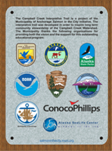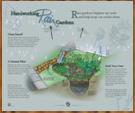Taku Lake Display - 61° 9' 7" N, 149° 52' 49" W

■ ■



|
 Visit the Trail Visit the Trail(Google Earth Required) |
 Site Navigation |
 
|
 
|
|
Taku Lake Display - 61° 9' 7" N, 149° 52' 49" W |
 ■ ■ |
|||||


|
||||||
|
|
Invaders in the CityInvasive species are threatening native plants, fish, and wildlife in Anchorage.Invaders ExplainedAn invasive species is an organism that does not naturally occur in a specific area and whose introduction does or is likely to cause harm to the economy, environment, or human health. Invasive species are often spread by humans, either intentionally or by accident. Preventing the introduction of invasive species is important since controlling them can be very expensive. No Way OutOne local example of an invasive species is northern pike, a toothy predator that is not native to our state south of the Alaska Range. Unfortunately, pike have been illegally introduced into water bodies in Anchorage and other parts of Southcentral Alaska. Local salmon, trout, and other fish do not have defenses against them, and our shallow lakes and creeks provide few hiding places. The result is more pike and fewer trout and salmon. Creeping TakeoverInvasive species also exist among plants. Non-native plants such as purple loosestrife and European bird cherry (the Mayday tree) have been widely planted in Anchorage for ornamentation. These and other invasive plants can spread rapidly, displacing native vegetation which salmon and other local wildlife depend on for food and shelter. What You Can Do
|